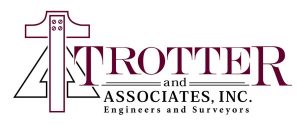 Join CSWEA
Join CSWEAWEF Resource Recovery Roadmaps
http://www.wef.org/resources/topics/browse-topics-o-z/resource-recovery-roadmaps/
The goal of the Resource Recovery Roadmaps is to develop a high-level approach to help guide utilities and industry decision makers in issues to consider when considering the NEW paradigm (Nutrients, Energy, and Water). The Roadmaps are brief and high-level to be accessible to all types of stakeholders, including public officials, utility managers, operators, engineers, and regulators. They do not “reinvent the wheel,” with all of the great technical resources available. Rather, the focus is to help decision makers quickly understand the strategic issues inherent in a water reuse effort.
WEF Biosolids & National Biosolids Partnership
http://www.wef.org/resources/topics/browse-topics-a-n/biosolids/
Biosolids are the nutrient-rich organic materials resulting from the treatment of domestic waste at a wastewater treatment facility. Through biosolids management, solid residue from wastewater treatment is processed to reduce or eliminate pathogens and minimize odors, forming a safe, beneficial agricultural product. Biosolids are carefully monitored and must be used in accordance with regulatory requirements.
WEF Energy
http://www.wef.org/resources/topics/browse-topics-a-n/energy/
Large amounts of electricity are required to obtain, treat and transport water and wastewater. In addition, large amounts of water are needed to produce electricity. As energy prices rise, they drive utility costs higher, causing operating costs of water treatment plants and water resource recovery facilities (WRRFs) to soar. WRRFs are typically the largest energy consumers in local government, accounting for 30% to 40% of the total energy consumed. Many WRRFs have begun steering away from their dependency on foreign oil by researching wind, solar, and hydroelectric power, as sustainable solutions are needed quickly.
WEF Nutrients
http://www.wef.org/resources/topics/browse-topics-a-n/nutrients/
Nutrients — commonly nitrogen and phosphorus — are found in agricultural and home fertilizers and also are generated by livestock, industrial, and municipal systems. Nutrients are needed to sustain life, but too many nutrients in aquatic environments lead to the depletion of oxygen, potentially leading to poor water quality or “dead zones” that cannot sustain life. Wastewater treatment plant effluent is one of several sources of nutrients in the aquatic environment. Water resource recovery facilities can achieve very low nutrient levels from can be achieved through advanced biological and chemical methods, but trade-offs exist between the nutrient removal and the chemicals and energy consumption it requires.
WEF Water Reuse
http://www.wef.org/resources/topics/browse-topics-o-z/water-reuse/
Less than one percent of the world’s water supply is potable, making water reclamation, also known as water reuse, a crucial practice that ensures there is plenty to go around. In addition to the use of reclaimed water for potable purposes, water quality experts support the consideration and use of highly treated reclaimed water for indirect potable reuse. The reuse of municipal wastewater for beneficial purposes is an important aspect of the world’s total water resources management. Water reuse is a multifaceted issue and two important terms are used to describe how recycled water is an integral part of the water cycle. Recycled water generally refers to treated domestic wastewater that is used more than once before it passes back into the water cycle. The terms “reused” and “recycled” often are used interchangeably depending on where you are geographically.
WEF LIFT Toolbox
This toolbox outlines opportunities for WEF Member Associations (MAs) to connect with LIFT and to help expedite new technology adoption in their region. The toolbox pairs with MA leader training to help drive innovation in the water sector.
NACWA Water Resources Utility of the Future
http://www.nacwa.org/index.php?option=com_content&view=article&id=1604&Itemid=250
NACWA, the Water Environment Federation (WEF), and the Water Environment Research Foundation (WERF), have released the Water Resources Utility of the Future… Blueprint for Action to capture the groundbreaking transformation happening at wastewater utilities as they progressed beyond simply complying with the Clean Water Act. Clean water agencies have been increasingly embracing and implementing innovative approaches and technologies related to energy production, water reuse, green infrastructure, non-traditional partnerships, and more, to improve environmental performance while lowering costs and increasing revenue and helping boost the local economy. This triple-bottom-line approach is at the heart of the Utility of the Future (UOTF) initiative and is rapidly spreading throughout utilities of all sizes across the nation.
Department of Energy Better Buildings
https://betterbuildingssolutioncenter.energy.gov/accelerators/wastewater-infrastructure
The Wastewater Infrastructure Accelerator aims to catalyze the adoption of innovative and best-practice approaches in data management, technologies, and financing for infrastructure improvement. To accomplish this, the Accelerator will work over three years with state, regional, and local agencies that are engaging with water resource recovery facilities in their jurisdiction to accelerate a pathway toward a sustainable infrastructure of the future. Partners will seek to improve the energy efficiency of their participating water resource recovery facilities by at least 30 percent and integrate at least one resource recovery measure.

To provide a Water Environment Federation (WEF) organization (Illinois, Minnesota, Wisconsin) offering multiple opportunities for the exchange of water quality knowledge and experiences among its members and the public and to foster a greater awareness of water quality achievements and challenges.




